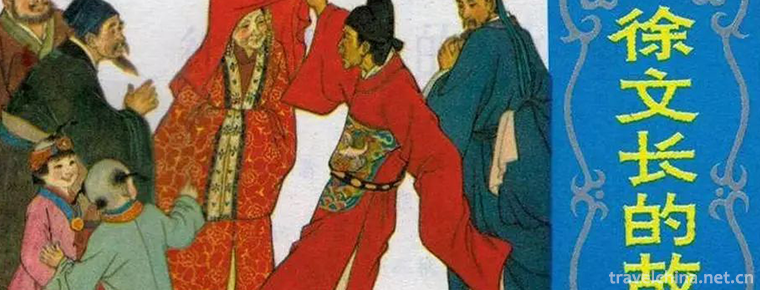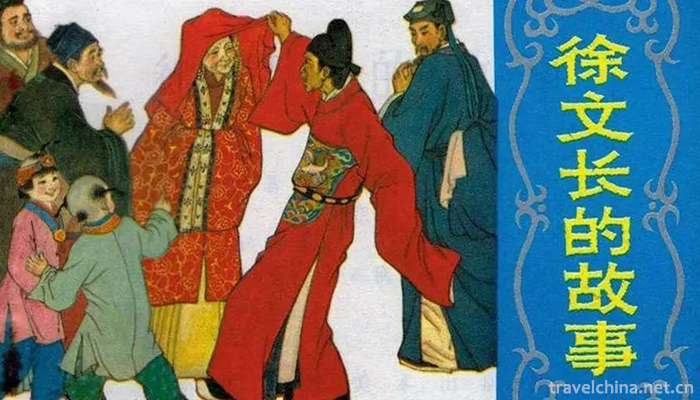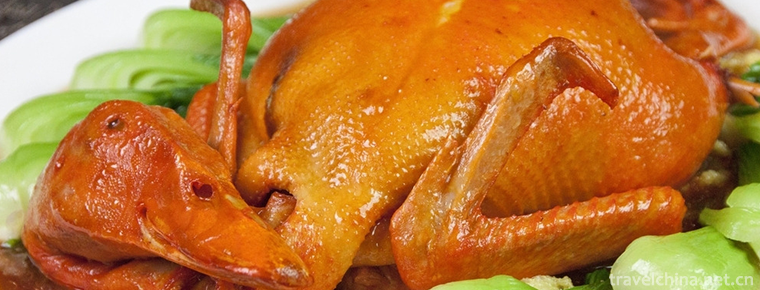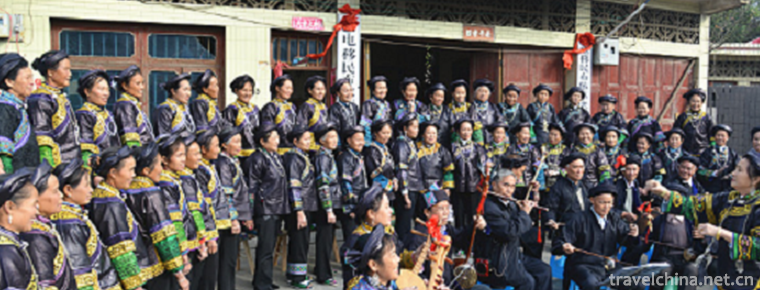2019-03-27

- By ChinaWiki.net
- Chinese Edition
- 2019-07-09
Xu Wenchangs Story
Xu Wenchang's Story, a traditional folk tale in Shaoxing City, Zhejiang Province, is one of the national intangible cultural heritage.
The story of Xu Wenchang takes the history of the middle and late Ming Dynasty as the background. From the legend story of Xu Wenchang's youth, "Taking things from the pole", it has been told to his dying legend "Transforming thousands of treasures into treasures". The legend is spread in various ways and rich in content, showing Xu Wenchang's wisdom and versatility, humor, patriotism, close to civilians, contempt for dignitaries and other qualities in an all-round way, with strong Shaoxing characteristics and local flavor.
On June 7, 2008, Xu Wenchang's story was approved by the State Council of the People's Republic of China to be included in the second batch of national intangible cultural heritage catalogues, numbered I-54.
historical origin
Xu Wenchang's story is one of the important tales of witty characters of the Han nationality, which originated in the middle and late Ming Dynasty and has lasted for a long time. As a folk oral creation, Xu Wenchang's stories are based on anecdotes and interesting stories of the historical figure Xu Wei (Ziwenchang). They also absorb a large number of tales of witty people. They are widely spread in Shaoxing and other southern areas of the Yangtze River. They are becoming more and more abundant over three hundred articles.
Cultural characteristics
artistic characteristics
"Xu Wenchang's Story" takes the history of the middle and late Ming Dynasty as the background, from the legendary story of Xu Wenchang's youth "Taking things from the pole" to his last words "Transforming millions of treasures into treasures". The content of the story includes: punishing local tyrants and evil gentry, fighting against Japanese aggressors'miraculous achievements; outstanding poetry, couplets and calligraphy and painting; Wisdom and plan to solve difficult problems; bitter irony to the enemy; care for friends and the people below. It reflects Xu Wenchang's super talent and his personality and quality that "power can not be surrendered, wealth can not be lewd, and poverty can not be removed".
Story features
Xu Wenchang's story has the following characteristics: it has a long history, which has been handed down spontaneously for more than 400 years; it has a wide range of regions. It not only spreads all over Shaoxing, but also radiates the places where Chinese people live in Jiangsu, Zhejiang, Shanghai and even overseas. It is rich in content and shows Xu Wenchang's wisdom, humor and patriotism in an all-round way. They are close to civilians, contempt for power and nobility, punishment for corruption and so on. They have various forms, and their places and ways of transmission are not fixed and arbitrary.
Xu Wenchang's stories have important value in Chinese folk literature, and at the same time, they provide useful information for biographical literature and historical research.
Manifestation
As a folk oral creation, Xu Wenchang's stories are based on anecdotes and interesting stories of the historical figure Xu Wei (Ziwenchang). They also absorb a large number of tales of witty people. They are widely circulated in Shaoxing and other southern areas of the Yangtze River. They are becoming more and more abundant day by day. There are about 300 articles collected by Wu Chuan-lai. It was handed down orally by Wu in the form of storytelling, along with articles.
Inheritance and Protection
Inheritance value
Literary value: It is not only a popular subject of Chinese folk literature, but also a popular subject of creation and adaptation of literary and artistic styles such as poetry, prose, sketches, movies, dramas, and quyi.
Historic value: The stories of Xu Wenchang passed down by the people have certain research value for painting history, calligraphy history, anti-Japanese history, couplet history, imperial examination history, pawn history and shipping history, and provide valuable information.
Humanistic value: In the process of spreading the story, the historical figure Xu Wenchang and Shaoxing Shiye's local historical events, cultural relics, natural scenery and social customs are combined to reflect the humanities and folk customs of Vietnam. The study of Shaoxing regional culture and folklore is of great value.
Current situation of inheritance
Due to the impact of modern culture, Xu Wenchang's storytellers have been short of successors, and the form of storytelling has gradually faded out and decreased. The continuous enrichment of modern media means has brought great impact on the storytelling of Chinese folk tales. Therefore, rescuing and protecting Xu Wenchang's story is imminent.
Heritage figures
Wu Chuanlai, male, was named as the representative successor of the second batch of national intangible cultural heritage projects in 2008, and declared in Shaoxing, Zhejiang Province. Project Name: Xu Wenchang's Story.
protective measures
In Shaoxing, there is an old man named Wu Chuan. He liked to listen to stories when he was young. He loved collecting and telling stories all his life. With his accumulated collection and telling, these folktales have been effectively protected and passed on.
social influence
Honorary recognition
"Xu Wenchang's Story" has important value in folk literature, and at the same time, it provides useful information for biographical literature and historical research.
Important activities
Wu's spare time is basically used to collect, record and tell stories. Not only is Xu Wenchang, but he also collects many stories about Shaoxing Master and Shaoxing Taimen Lane Hall, and has been collating and publishing them one after another. At present, there are more than 300 stories of Xu Wenchang collected by him.

Ask a Question
Your email address will not be published.



0 Questions